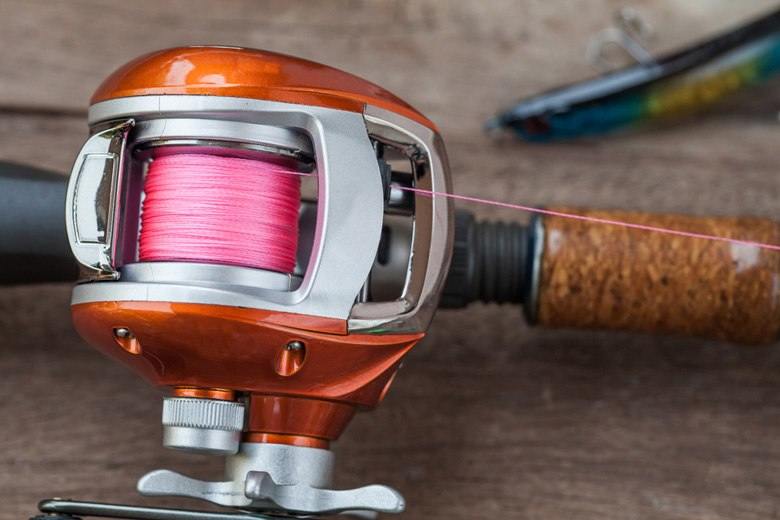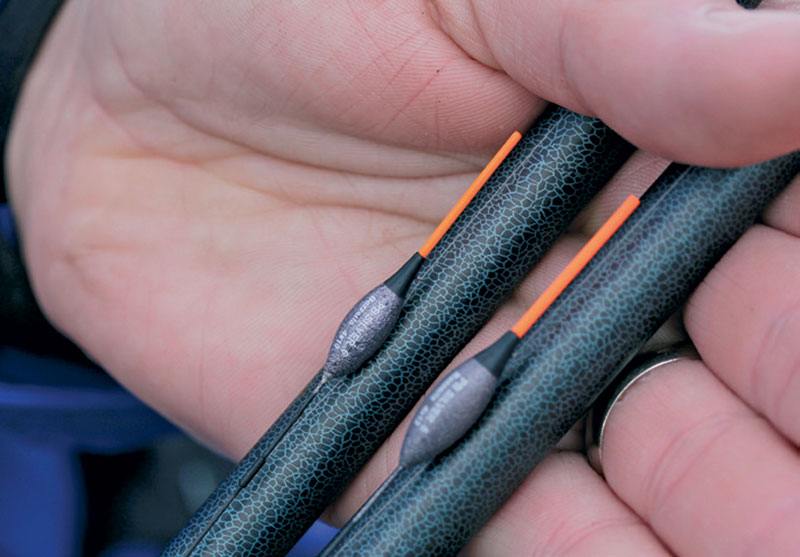Becoming skilled with bait casters reel needs more practice and repetition than close faced or spinning reels. When spooling bait casters with new lines, it’s crucial to set up the new line properly for the reel to run smoothly. Keep track of the condition and state of the reel line and change it often.
The effects of reeling fish, sun and heat will degrade your line’s strength. An improperly installed line may result in tangles and backlashes. Fishing tackle needs a bit of maintenance, especially if it’s frequently in use.
The good news is, we are going to teach you how to line a bait caster in this post. The method we’re showing you here is fast and easy. You’re sure to learn this in no time.
So read on...
More...
I. Bait Casters and Fishing Lines
1. Bait Casters

To obtain fresh (sinking) casters that are yellowy-gold in colour, put slow maggots through a 1/8 in-mesh riddle (every few hours during the summer months) into chilled, plastic bait box. Cover them with a piece of damp toweling and store in the coldest part of the fridge, which will greatly retard metamorphosis.
Add further batches or riddled casters as they come off. Alternatively, put them straight from the riddle into a bucket of water and skim off any floaters. Transfer the sinkers into a polybag and put straight into the fridge, where they have a life of 3 or 4 days and should be used before starting to sink.
Putting them into water obviously, terminates metamorphosis by killing the maturing insect.
Casters are an excellent alternative hook bait to maggots, and an unbelievable addition to cereal-based ground baits, especially for bream and tench. They can produce staggering results with roach, dace, chub, and barbell, even from clear-flowing rivers when used in conjunction with hempseed that is either loose-fed or deposited via a block-end feeder.
Cocktails of casters in conjunction with brandlings, bread, sweetcorn or maggots are very effective for fishing over weed beds due to the inherent buoyancy of dark (floating) casters.
2. Floating casters
Simply allow these to turn dark brown before ridding them off, and present them on a flat float rig or with a tenpin floating controller (Freshwater float fishing techniques – Floating-controller fishing). Catapult loose feed well upwind and wait or species like dace, rudd, chub and carp to suck them down.
3. A Bait Casting Reel
Unlike other reels, a bait casting reel mounts in a way that it lays above the rod instead of below it. The reel features a line guide which a fishing line threads to keep it from knotting or twisting during casting.
The reel’s interior has a sequence of bearings that enable the reel to move freely when reeling or while casting the line back, but it has something known as a drag control as well, which regulates how quickly the line can roll out when a fish is on the hook.
Utilizing a Bait Casting Reel
Some fishers decided to utilize a bait casting reel just in certain cases when targeting for certain breeds of fish. Others utilize only a bait casting reel, despite the fish type they hope to get.
Bait casting reels function well in any condition wherein the fisherman requires a very accurate cast, like when attempting to land a lure in muddy waters or close logs.
4. Kinds of Fishing Line
Modern technology affects every aspect of life nowadays, including the customary fishing line. The more innovative good braided fishing line for angler is more firm and less likely to result in problems or break. It aids to understand the various kinds of line available.
- Monofilament
- Braided or fused
- Fluorocarbon
- Invisible to fish.
- Polymer fiber.
- Highly flexible as well as resistant to destruction from water or the sun.
II. How to Line a Bait Caster
While personal preference has a role in selecting fishing line, so does the form of fishing. Particular types of fish need fishing with a certain kind of fishing line to guarantee that the catcher is almost certainly to become successful.
First Step | If required, take out old line. Get rid of line properly. Don’t throw overboard because a fishing line is an ecological and wildlife hazard. Assess the condition of the spool of the bait caster to guarantee that the spool's surface is smooth and clean. |
Second Step | Thread the line through every rod guide, starting with the rod tip. Make certain that the line is placed in each guide because it’s easy to overlook the guide. Affix the line to the spool of the bait caster utilizing a Uni-Knot. |
Third Step | Tie a Uni-Knot and run six-inches of line around the spool and then doubling back to create a loop. Make two to three loops with the doubled line as well as the loop. Yank on the tag end along with the standing line and then tighten the knot. Cut the tag end flush with nail clippers. |
Fourth Step | Have a helper run a pen through the middle of the line spool. The pen will make an axle for the spool of line to spin freely. Maintain pressure on the spool of line for the line to play out under less pressure. |
Fifth Step | Spool the reel and turn the handle. Make use of your forefinger and thumb to squeeze the line as it is reeling. This will add more tension to the line, seating it tightly and not digging into the former line loops. Trim the line from the spool of the line when you’ve added the preferred amount of line. |
This man demonstrates how to line a bait caster:
Warnings and Tips
Failure to set up new line tightly to the bait caster reel can cause defective casting.
Final Thoughts
A reel for bait casting is one of the simplest reels to wind line onto, but it’s still a complicated task to newbies. With a little practice and the steps we’re going to share in this post, it would be easy for your to make ensure that a bait casting reel line is standing by when the fish is biting.
We this post was helpful to you. If you have more questions about how to line a bait caster, feel free to address them in the comments. You can also share this information with friends who may need it. Good luck getting that catch!

Leave a Reply